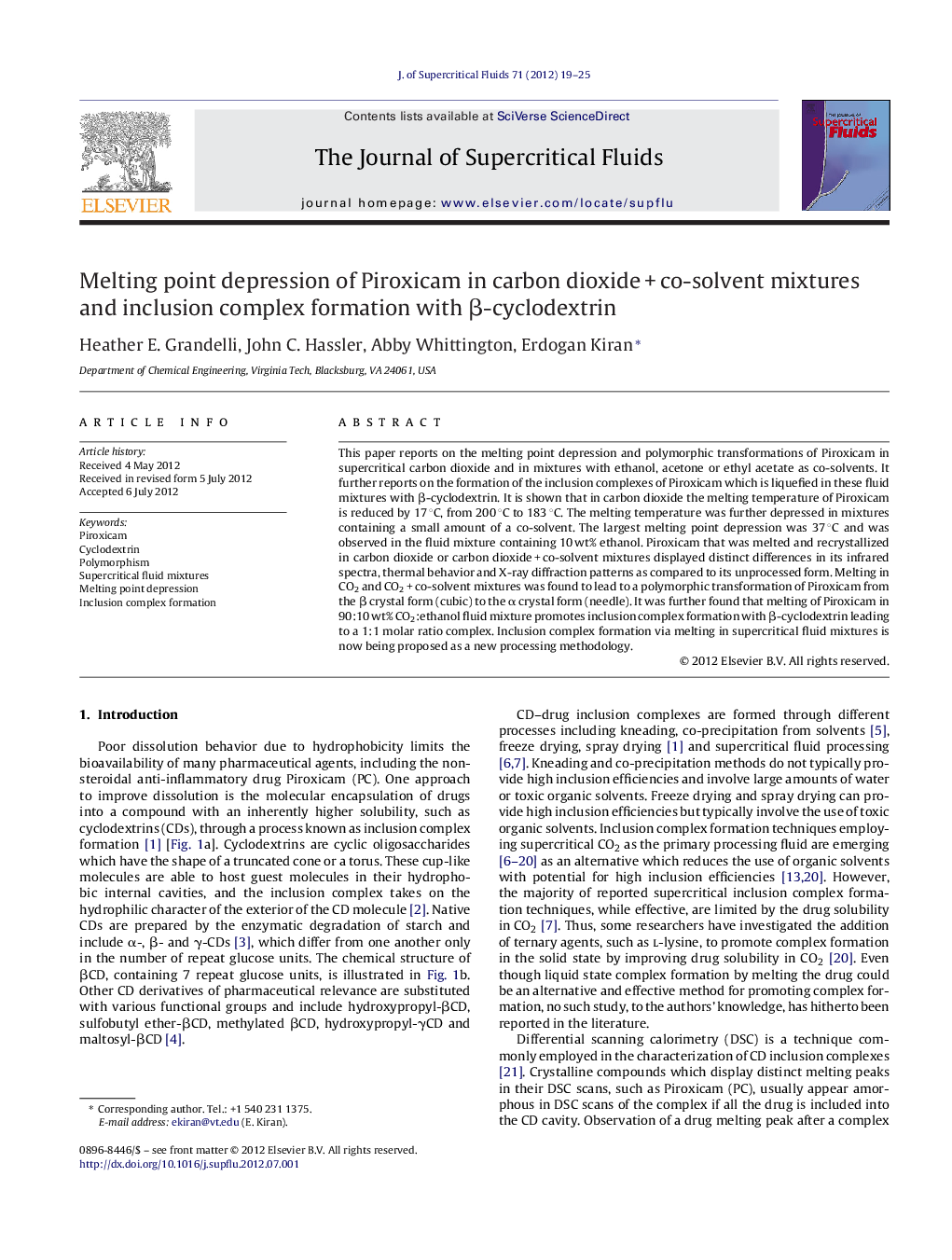| Article ID | Journal | Published Year | Pages | File Type |
|---|---|---|---|---|
| 230997 | The Journal of Supercritical Fluids | 2012 | 7 Pages |
This paper reports on the melting point depression and polymorphic transformations of Piroxicam in supercritical carbon dioxide and in mixtures with ethanol, acetone or ethyl acetate as co-solvents. It further reports on the formation of the inclusion complexes of Piroxicam which is liquefied in these fluid mixtures with β-cyclodextrin. It is shown that in carbon dioxide the melting temperature of Piroxicam is reduced by 17 °C, from 200 °C to 183 °C. The melting temperature was further depressed in mixtures containing a small amount of a co-solvent. The largest melting point depression was 37 °C and was observed in the fluid mixture containing 10 wt% ethanol. Piroxicam that was melted and recrystallized in carbon dioxide or carbon dioxide + co-solvent mixtures displayed distinct differences in its infrared spectra, thermal behavior and X-ray diffraction patterns as compared to its unprocessed form. Melting in CO2 and CO2 + co-solvent mixtures was found to lead to a polymorphic transformation of Piroxicam from the β crystal form (cubic) to the α crystal form (needle). It was further found that melting of Piroxicam in 90:10 wt% CO2:ethanol fluid mixture promotes inclusion complex formation with β-cyclodextrin leading to a 1:1 molar ratio complex. Inclusion complex formation via melting in supercritical fluid mixtures is now being proposed as a new processing methodology.
Graphical abstractFigure optionsDownload full-size imageDownload as PowerPoint slideHighlights► The melting point of Piroxicam was depressed in carbon dioxide and its mixtures with ethanol, acetone or ethyl acetate. ► Piroxicam underwent a polymorphic transformation when recrystallized from the molten state in these fluids. ► Complex formation with β-cyclodextrin is promoted with Piroxicam in the molten state in CO2 + ethanol fluid mixtures. ► A new process is described for forming inclusion complexes by melting of the drug in supercritical fluid mixtures.
